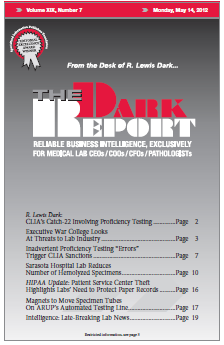CEO SUMMARY: Seeking to improve turnaround time for stat lab tests, the laboratory at Sarasota Memorial Health Care System identified high rates of hemolysis as the chief reason for less than ideal TAT. Because 32% of blood draws were handled by the lab’s phlebotomy staff while 68% of blood draws were performed by nurses and …
Sarasota Hospital Lab Reduces Number of Hemolyzed Specimens Read More »
To access this post, you must purchase The Dark Report.


